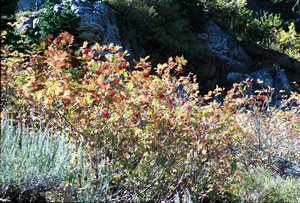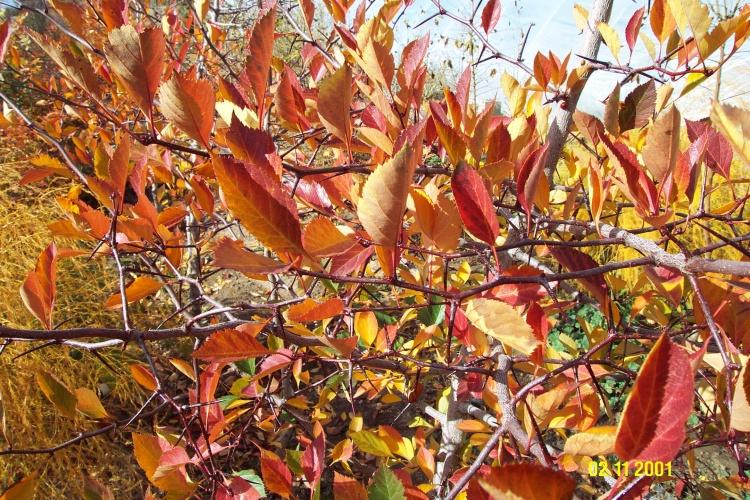Fall Color in Utah
by Dr. Mike Kuhns, USU Extension Forestry Specialist
Utah has great fall color. Here are some descriptions of the Utah native trees that contribute the most to the fall color display.
Canyon or Bigtooth Maple (Acer grandidentatum)
This tree arguably is the top provider of fall color in northern Utah (and the rest of Utah too). It occurs on lower mountain slopes up to mid elevations as a small to medium-sized, shrubby to upright tree. Sometimes referred to as western sugar maple, it resembles the eastern sugar maple with its brilliant orange-red fall color. Many individuals and tour buses make their way through Logan Canyon every fall to view these incredible trees, but it presents an outstanding fall color display throughout Utah's canyons and uplands. Unlike some other native trees, this tree also does well when planted in valley locations, as long as it receives a little irrigation.
Quaking Aspen (Populus tremuloides)
Aspens also vie for the top color title in northern Utah and throughout the state. Their color can be orange or even orange-red, but usually tends more toward bright yellow. As opposed to the more scattered canyon maples, aspen usually occurs in fairly dense stands that may be pure aspen or may have conifers mixed in. Aspen stands or clumps usually are uniform in color and are sometimes called clones, referring to their main reproduction method of sprouting from roots, creating genetically identical groups. Aspens sometimes intermix with canyon maples at mid elevations, but extend to much higher elevations, reaching up above 10,000 feet. Unfortunately people have difficulty growing this popular tree in landscapes at low elevations due to insect and disease problems that aren't an issue for high elevation native trees.
Gambel or Scrub Oak (Quercus gambelii)
Occurring as a shrub as much as a tree, our native Gambel oak can provide strong to muted fall color, mostly in the range of orange to red-orange, but sometimes more red-brown. Much of the strength of its fall display depends on the prevalence of leaf spot diseases and leaf feeding insects in a particular year. This tree grows at low foothill to mid elevations throughout much of northern Utah and the rest of the state, but does not occur north of southern Cache and Boxelder Counties. This tree is seldom planted in cultivated landscapes, but shows up here and there where developed areas extend up into its natural range.
These three tree species are responsible for most of Utah's fall color, but there are a number of other species that contribute. Some to look for (all can be found in the mountains throughout most of Utah) include:
More information on fall color and other tree characteristics can be found in the book "Trees of Utah and the Intermountain West" by Dr. Mike Kuhns, available at many bookstores and on Amazon.







